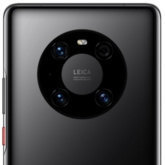The liquid camera lens in Huawei smartphones is a real breakthrough
Source: Pure PC added 28th Nov 2020The whole case has been unofficially discussed before, but only now we have received information from the Middle Kingdom, which means that Huawei is at the final stage of liquid lens tests. The solution has a chance to go to the manufacturer’s flagship next year, the P model 50. In order to fully understand the advantages of the new mechanism based on two types of liquid and electric voltage, it is necessary to explain the details of the Chinese idea. What exactly would the said lens be and how much would it really affect the comfort of using the camera installed in the smartphone? Contrary to appearances, the operation of the mechanism, of course theoretical, is quite simple to explain. Let’s get to the point.
Next year’s Huawei P flagship 50 may receive a completely new telephoto lens mechanism. What is a liquid lens and how will we be able to use it? Here is an explanation of the point.
Smartphone test Huawei Mate 40 Pro. HMS system instead of Google
According to unofficial information coming straight from China, Huawei is at the final stage of liquid lens testing. For the purposes of research, this lens was paired with the as yet unannounced Sony IMX sensor 782. It is also worth noting that initially the solution will only be used in telephoto lenses. Instead of a traditional glass lens, there will be a drop of water and oil in the module. By changing the supplied tension, the water will change its shape, taking more or less convex forms. This will allow for extremely quick focus point setting compared to traditional mechanisms. This process would take a few milliseconds, which is similar to the human eye.
Huawei P Test 40 Pro: The new king of photography with a high-performance battery
But that’s not all. The liquid lens also means the ability to rapidly change the focal length and image stabilization in a quality not found in today’s mobile devices. The source of the leak also claims that the new solution will be highly shock resistant. Of course, in relation to the traditional mechanisms used in today’s smartphones. This may be a breakthrough, but I somewhat regret the fact that the technology will be served by a company that is doing worse and worse on the global market. This is due to the economic sanctions imposed by the US. Perhaps, however, Huawei will want to license its technology and it will also go to equipment from other brands.
Source: GSMArena, AnTuTu, Digital Chat Station (Weibo)
